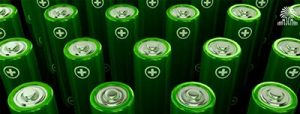USC professor’s discovery could make batteries last more than 250,000 recharge cycles
July 17, 2024Batteries are becoming an important part of the world’s energy system, but their ability to recharge may be too limited.
Morgan Stefik, a chemistry professor in the University of South Carolina College of Arts and Sciences, says typical batteries recharge only a few hundred times, or a few thousand at most. That means more batteries must be made through recycling or new manufacturing.
Recharge limits already are affecting the ability to produce enough batteries and store enough electricity to meet demand. The supply of lithium has not kept up with demand for lithium batteries in electric vehicles, for example. The use of larger batteries that can power homes or even neighborhoods is growing, too. A Bloomberg analysis predicts that the world’s energy storage capacity needs to grow 16-fold over between 2022 and 2030.
Stefik hopes to help meet these energy demands by improving the chemistry inside of batteries to make them charge faster and last longer. He is a key collaborator in USC’s new Carolina Institute for Battery Innovation.
“The goal of our research with batteries is trying to make them much more durable,” Stefik says. “If we can get a two- to 10-x improvement in how long they last, how many cycles we can get out of them before they have to be recycled, then that really has a significant economic impact.”
Stefik already has promising results for his work. His team found that niobia—a material used in batteries―could recharge 250,000 times and still retain more than 90% of its storage capacity when the charging conditions were appropriated controlled. The journal Advanced Functional Materials published this finding in December 2023.
Stefik is not stopping there, though. He envisions finding ways to make batteries last for a million cycles. Meanwhile, he is searching for new niobate compounds that have the potential to charge faster and last longer so they can be used in industrial battery production.
In the near future, his discovery could be applied in large-scale batteries, the kind that might collect energy from wind turbines and then provide power to a neighborhood even when the wind is not blowing. Once the method works with fast charging, it could be used in electric vehicle batteries.
“The work we’ve had here in batteries has been quite exciting,” says Stefik, adding that his lab sometimes feels like the Wild West, discovering unanticipated behaviors with energy storage materials.
“We’re expanding our battery research, so there are opportunities for USC undergraduates and graduates on the project,” he says.


















